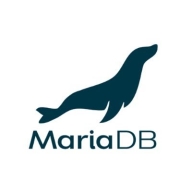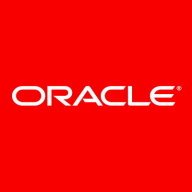

MariaDB and Oracle Multitenant are significant competitors in the database solutions market. Oracle Multitenant is favored for its advanced security features and efficient resource usage, which might give it an edge in large enterprise environments.
Features: MariaDB is renowned for being open-source, user-friendly, and scalable. It efficiently handles large databases and is well-suited for cloud-based and identity provider services. Oracle Multitenant excels in database consolidation through pluggable databases, offering excellent resource sharing and management. Its security features and hardware resource efficiency are standout attributes.
Room for Improvement: MariaDB could enhance its enterprise integration, improve security features, and support more complex queries. Scalability and redundancy are other areas needing attention. Oracle Multitenant encounters challenges with complex upgrades, lacking support for certain features, and prohibitive costs, especially for smaller organizations. Users would benefit from easier integration and a more intuitive interface.
Ease of Deployment and Customer Service: MariaDB is commonly deployed in diverse settings, including on-premises and cloud environments, benefiting from strong community support due to its open-source nature. Though technical support may be somewhat limited, its straightforward deployment is notable. Oracle Multitenant suits larger enterprises, offering comprehensive support and a rich feature set, albeit at higher costs.
Pricing and ROI: MariaDB offers significant cost benefits as an open-source solution, making it a favored choice for budget-conscious environments. Its community version is especially valued for cost-effectiveness. Oracle Multitenant, despite its higher expense, is often seen justified due to its quality and enterprise-level capabilities, though smaller businesses might find the costs challenging. Both solutions have proven ROI potential, but Oracle’s pricing strategy requires careful budget planning to maximize its advantages.


MariaDB is an open source relational database created by the original founders of MySQL. It is considered one of the most popular and trusted database servers throughout the world. MariaDB is a valued component found in most cloud offerings and is the default in many Linux tools. It is also widely used by Wikipedia, WordPress, and Google, among other well-known sites. Maria DB easily melds data into concise information from a vast array of applications, such as banking, online shopping, websites, and more.
MariaDB was originally created to improve MySQL performance. It is the most widely chosen database server due to the solution being super fast, robust, user-friendly, and easily scalable. MariaDB also offers a substantial ecosystem of plugins, storage engines, and numerous other valuable tools that make it very attractive for a significant offering of use cases.
The solution’s newest functionalities include compatibility with Oracle Database and Temporal Data Tables, and advanced clustering with Galera Cluster 4, which make it easier for users to research data history from any point in the past. Additionally, the most recent versions include JSON and GIS features. MariaDB is committed to staying an open source solution.
MariaDB Features
Reviews from Real Users
Faustine C., Engineering Supervisor- Corporate Data Solutions and Services at TZ Telecoms Corporation, shares, “The software provides a lot of information on what is happening inside the database. For most performance parameters it is easy to know if something is not right in the configuration or optimization which helps engineers take remedial fine-tuning measures. For example, if the database is underperforming it is easy to know which performance parameter can be adjusted to handle the workload. It is difficult to troubleshoot database issues if many performance parameters can not be monitored or debugged which is the case with some database management systems. It provides great monitoring of data storage, processing, and performance stability which is really important for real-time data storage and processing. It's a user-friendly product.”
A PeerSpot user who is a Senior Engineer at a tech services company relates, “ The solution's high availability is its most valuable aspect. We have found the product to be stable and the initial setup is pretty simple. I'd rate the solution at a ten out of ten. I'm very happy with it overall. I would recommend the solution to others. It's easy to find details about the product online and to learn about it.”
Oracle Multitenant - an Oracle Database 12c Enterprise Edition option – introduces a new architecture that enables customers to easily consolidate multiple databases, without changing their applications. This new architecture delivers all the benefits of managing many databases as one, yet retains the isolation and resource prioritization of separate databases. In addition, Oracle Multitenant enables rapid provisioning and upgrades, and fully complements other options including Oracle Real Application Clusters and Active Data Guard.
For more information on Oracle Multitenant, visit Oracle.com
We monitor all Relational Databases Tools reviews to prevent fraudulent reviews and keep review quality high. We do not post reviews by company employees or direct competitors. We validate each review for authenticity via cross-reference with LinkedIn, and personal follow-up with the reviewer when necessary.